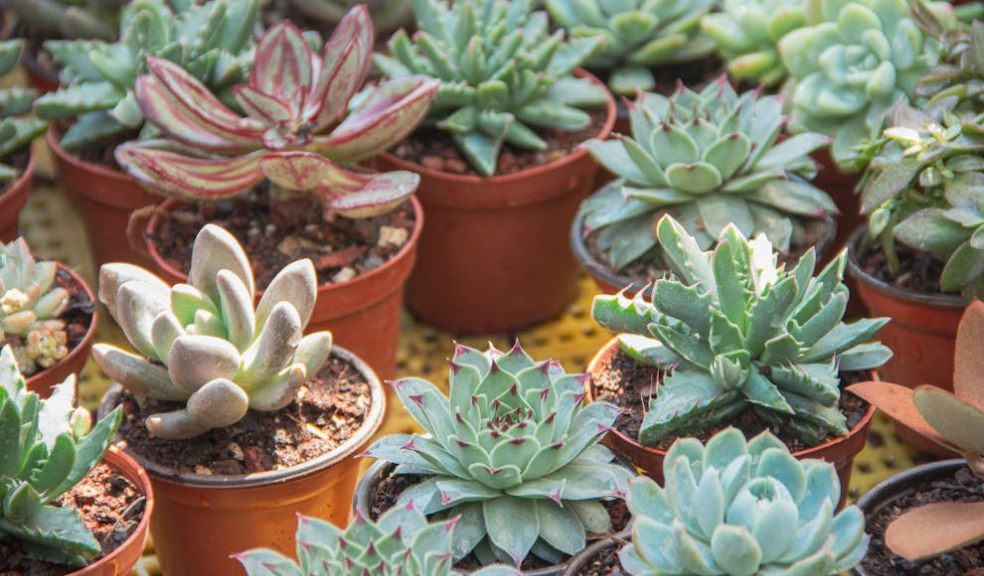
The Most Surprising Crops To Grow In Your Greenhouse
Struggling to find unique crops for your greenhouse? Some plants can truly surprise you with their ability to thrive indoors. This article will help you discover the most surprising crops in greenhouses and guide you on how to grow them successfully.
Growing Cucamelons in Your Greenhouse
Cucamelons, also called "mouse melons," are easy to grow in greenhouses. Plant the seeds indoors in spring. They need warmth and good light to sprout.
They look like tiny watermelons but taste like cucumbers with a hint of lime. These charming fruits add fun to your garden. They thrive best at temperatures between 18°C and 24°C.
Grow them on a trellis for support as they climb quickly.
Water regularly but avoid overwatering; keep soil damp, not wet. With care, you will enjoy a bountiful harvest all summer long!
Cultivating Sweet Potatoes Indoors
Sweet potatoes grow well indoors. Use large pots or tubs with good drainage. Plant tubers in late spring to early summer. Ensure the soil stays warm and moist but not wet.
Keep the indoor temperature between 18°C and 24°C. Sweet potatoes need lots of sunlight, so place them near windows that get full light. Fertilise every two weeks for best growth.
Make sure to space plants well, giving each room to expand. Harvest sweet potatoes about four months after planting when leaves start yellowing.
Raising Pineapples in a Controlled Environment
Grow pineapples in your greenhouse for a sweet reward. Pineapples thrive with extended growing seasons and better sunlight use. You need to plant one seed per pot, using rich soil and good drainage.
Greenhouses keep the plants warm through the year.
Pineapples are single-yield crops, so expect one fruit per plant. Place pots where they get full sun. Water them sparingly; too much can rot the roots. With care, you will enjoy delicious pineapples without leaving home!
Harvesting Kumquats Under Glass
Kumquats grow well in greenhouses. They need plenty of sunlight and warm temperatures. You can expect to harvest them once a year, just like asparagus and artichokes.
Pick fruits when they turn deep orange. They will be sweet with a bit of tangy flavour. Use gloves while picking to avoid damaging the delicate skin. Enjoy fresh or make preserves from your kumquat harvest!
Caring for Night-Blooming Jasmine
Night-blooming jasmine thrives in a controlled greenhouse. Keep the temperature between 18°C and 24°C. This plant loves humidity, so mist it often or use a humidifier. Night-blooming jasmine needs about six hours of indirect sunlight daily.
Avoid direct sun as it can scorch the leaves.
Water regularly to keep soil moist but not soggy. Use well-draining soil mixed with organic compost for the best results. Fertilise every two weeks during growing season using balanced fertiliser rich in phosphorus and potassium to promote blooming.
Prune after flowering to shape the plant and remove dead branches.
Watch for pests like aphids and spider mites that may harm night-blooming jasmine. Control pests by wiping leaves with soapy water or using neem oil spray if necessary.
Propagating Blue Trumpet Vine
Propagate blue trumpet vine using stem cuttings. Cut a piece around 4-6 inches long from a healthy plant. Remove leaves near the cutting base. Place it in moist soil with good drainage.
Keep the soil damp, but not waterlogged. Use containers to start several seedlings at once for better results. Provide bright, indirect light and maintain temperatures between 20-25°C (68-77°F).
Expect root growth within three weeks if conditions are right.
Maintaining Arabian Jasmine in Your Greenhouse
Arabian jasmine thrives in well-drained soil. Ensure the greenhouse temperature stays between 16°C and 24°C. This plant loves sunlight but can tolerate some shade. Water it when the topsoil feels dry.
Use liquid fertiliser once a month for optimal growth.
Prune Arabian jasmine regularly to promote bushy growth and more flowers. Watch out for pests like aphids or spider mites, which can harm your plants. Keep humidity high with a misting system or by placing a water tray near the plant.
Nurturing Egyptian Water Lily
Nurture the Egyptian Water Lily in a greenhouse for stunning blooms. Ensure your greenhouse is warm, around 25°C to 30°C. Keep water levels steady; these lilies need about 15 cm of water above their roots.
Use large pots or tubs for planting. Add rich soil mixed with compost. Place the pot in a sunny spot inside the greenhouse. Monitor seasonal shifts and adjust care as needed.
Feed with aquatic plant fertiliser every two weeks during growing season—the same way you would treat parsley or broad beans but specifically for an aquatic plant like this lily.
Remove dead leaves and spent flowers regularly to keep plants healthy. With care, you will enjoy beautiful blue-violet flowers that rival even prized ornamentals such as roses.
Producing Melon 'Galia' Successfully
Plant Galia melon seeds in late spring to early summer. Melons like warm weather. Keep the greenhouse temperature between 18-24°C.
Use well-drained soil and full sun. Water the plants regularly, but do not soak them. Space each plant about 45 cm apart.
Pollinate flowers by hand for better fruit set. Harvest melons when they turn yellow and smell sweet.
Check for pests like aphids and spider mites often. Use natural remedies if found.
Supplementary Tips for Greenhouse Gardening
Creating the right conditions in your greenhouse is key. Use space well to grow various crops efficiently.
Creating Ideal Environmental Conditions
Ensure your greenhouse has plenty of light but stays frost-free. Use fleece or heating to keep it warm in colder months. Clean the structure regularly and install insulation for better temperature control.
Water plants often, ventilate well, and provide shading when needed. Control pests to keep crops healthy. Sow hardy plants like Brussels sprouts and cabbage from late winter to early spring for best results.
Make sure your greenhouse is sufficiently sized. Consider buying a new greenhouse if the old one is getting too small or lack features.
Strategies for Managing Space Efficiently
Plan your greenhouse wisely. Use these strategies to maximise space:
- Measure the space. Know the square footage. This helps with crop spacing.
- Assess plant height and proximity. Tall plants can overshadow smaller ones.
- Use vertical gardening techniques. Grow cucumbers, tomatoes, or beans upwards.
- Use pots and containers for flexibility. Move them around as needed.
- Plant in layers within a bed or container. Place deep-rooted plants with surface crops.
- Employ catch crops like lettuces and basil between slower-growing main crops.
- Rotate crops regularly to keep the soil healthy and productive.
- Introduce shelving if you have high ceilings for more planting tiers.
- Properly position seed packets to avoid overcrowding when germinated.
Use these tips to make your greenhouse gardening more efficient and productive!

















